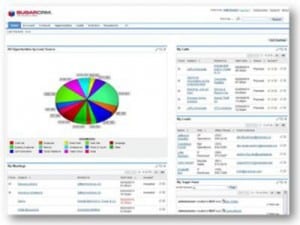 As an SAP application that has recently experienced some significant updates, SAP Cloud Application Lifecycle Management (ALM) is one of SAP’s many strong efforts to provide a cloud-focused service. Today, we will briefly discuss some recent discussions/advancements around the application.
As an SAP application that has recently experienced some significant updates, SAP Cloud Application Lifecycle Management (ALM) is one of SAP’s many strong efforts to provide a cloud-focused service. Today, we will briefly discuss some recent discussions/advancements around the application.
The Importance of SAP Cloud ALM
In a presentation during the recent SAP ALM Summit EMEA, a speaker detailed Cloud ALM’s importance to SAP and the business productivity gap as a whole.1 In particular, he discussed what he believes distinguishes SAP CALM from alternatives– a focus on the cloud and life cycle management (18:45). He noted that SAP CALM reduces the all-too-common productivity gap (stagnant productivity even while the business updates its technology) because SAP CALM focuses on a more comprehensive change of the current system. Additionally, he finds that SAP CALM’s integration with Signavio, Lean IX, BTP, and Datasphere further propels the application above others.
He also believes that the data in SAP CALM is cleaner than even that of recent advancements such as generative AI, because all of the data in that system is tied to a real-world application (28:49).
From his presentation, businesses can conclude that SAP Cloud Application Lifecycle Management will continue to be a major focus within SAP, which explains some of the company’s actions surrounding the application:
Integration with SAP BTP
In an interview around November 2023, Janko Budzisch discusses the application’s integration with SAP BTP.2 In particular, he stated that the integration was done because the SAP team found that many company’s struggled with using custom applications for the Cloud Foundry within SAP BTP. Additionally, many organizations wanted to use OpenTelemetry, so they could more easily observe the internal operations/potential issues of the system.
The Cloud ALM integration approach allows businesses to employ features such as alert management, simpler interfacing, and comprehensive applications of end-to-end monitoring.
Transition from SAP Solution Manager
Many businesses will be transitioning from SAP Solution Manager to SAP Cloud Application Lifecycle Management as the solution manager will be in maintenance mode until 2027, when it will be discontinued entirely.3 To ensure that businesses using SAP Solution Manager experience a smooth transfer, SAP has published guidance for businesses, broken down into three basic steps:
- First, the business should start using SAP Cloud ALM for basic operations as soon as possible (more information: https://support.sap.com/en/alm/sap-cloud-alm/transition-to-sap-cloud-alm/transition-to-calm-operations.html?anchorId=section_259988537)
- Then, the business should gradually introduce SAP Cloud ALM in an implementation once the existing functionality of the solution meets all business needs, or if the business wants to move to the cloud as soon as possible. (more information: https://support.sap.com/en/alm/sap-cloud-alm/transition-to-sap-cloud-alm/transition-to-calm-implementation.html)
- Finally, businesses with more complex requirements around system management should employ SAP Focused Run to ensure a smooth transition (more information: https://support.sap.com/en/alm/sap-cloud-alm/transition-to-sap-cloud-alm/transition-to-calm-operations-with-frun.html)
Stay tuned! Today, SAP has provided a quarterly update on SAP Cloud Application Lifecyle Management, which will be summarized in a brief post once notes are released.
1 SAP’s Comprehensive Approach to Cloud Migration: SAP Cloud ALM. https://www.youtube.com/watch?v=hosaMvuTuQw
2 “SAP Cloud ALM Extended to Cover SAP BTP.” https://news.sap.com/2023/11/sap-cloud-alm-extended-to-cover-sap-btp/
3 Transition to SAP Cloud ALM. https://support.sap.com/en/alm/sap-cloud-alm/transition-to-sap-cloud-alm.html






Leave A Comment